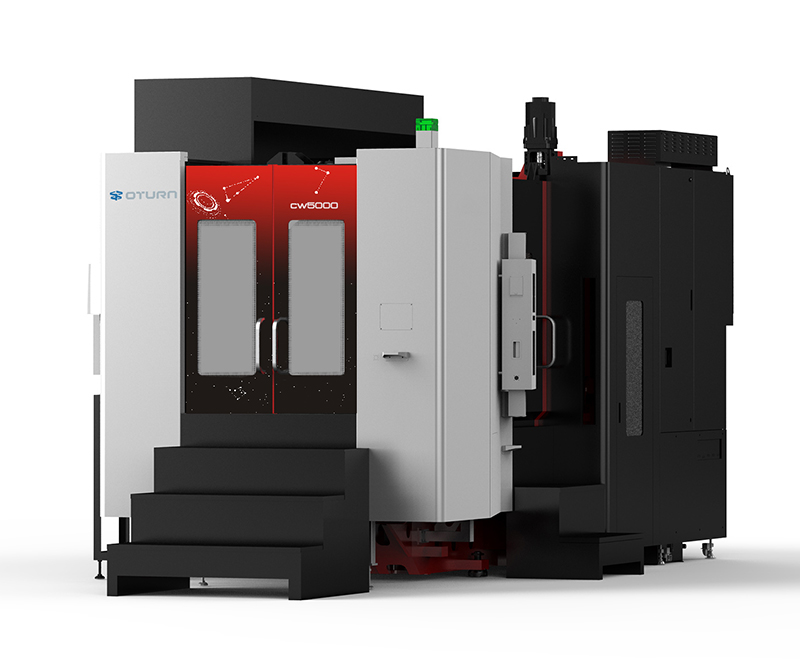The dual-station CNC horizontal machining center is an essential piece of modern precision manufacturing equipment, widely used in industries such as automotive, aerospace, and mold manufacturing due to its high rigidity, high precision, and high efficiency.
Features:
Dual-Station Design: Allows one station to perform machining while the other handles loading or unloading, improving machining efficiency and equipment utilization.
Horizontal Structure: The spindle is arranged horizontally, which facilitates chip removal and is suitable for mass production and automated machining.
High Rigidity and Precision: Suitable for industries such as aerospace, automotive manufacturing, and mold processing that require high machining accuracy and efficiency.
Multi-Process Integration: Capable of performing turning, milling, drilling, and other machining processes in one time clamping, reducing workpiece transfer and secondary clamping errors.
This article will detail several common tool change methods used in dual-station CNC horizontal machining centers to help readers better understand and apply this technology.
1. Manual Tool Change
Manual tool change is the most basic method, where the operator manually removes the tool from the tool magazine and installs it onto the spindle according to machining needs. This method is suitable for scenarios with fewer tools and low tool change frequency. Although relatively cumbersome, manual tool change still has its value in certain cases, such as when tool types are simple or machining tasks are not complex.
2. Automatic Tool Change (Robot Arm Tool Change)
Automatic tool change systems are the mainstream configuration for modern dual-station CNC horizontal machining centers. These systems usually consist of a tool magazine, a tool-changing robot arm, and a control system. The robot arm quickly grips, selects, and changes tools. This method features fast tool change speed, small movement range, and high automation, greatly improving machining efficiency and precision.
3. Direct Tool Change
Direct tool change is performed through cooperation between the tool magazine and the spindle box. Depending on whether the tool magazine moves, direct tool change can be divided into magazine-shifting and magazine-fixed types. In the magazine-shifting type, the tool magazine moves into the tool change area; in the magazine-fixed type, the spindle box moves to select and change tools. This method has a relatively simple structure but requires moving the magazine or spindle box during tool changes, which may affect tool change speed.
4. Turret Tool Change
Turret tool change involves rotating the turret to bring the required tool into position for changing. This compact design enables extremely short tool change times and is suitable for complex machining of slender parts such as crankshafts that require multiple machining operations. However, turret tool change demands high rigidity of the turret spindle and limits the number of tool spindles.
Summary
dual-station CNC horizontal machining center offer multiple tool change methods, each with distinct features and suitable applications. In practice, the choice of tool change method should consider machining requirements, equipment configuration, and operator habits to select the most appropriate solution.
Looking Forward to Meeting You at CIMT 2025!
From April 21 to 26, 2025, our technical team will be on-site at CIMT 2025 to answer all your technical questions. If you want to learn about the latest breakthroughs in CNC technology and solutions, this is an event you don’t want to miss!
Post time: Apr-18-2025







